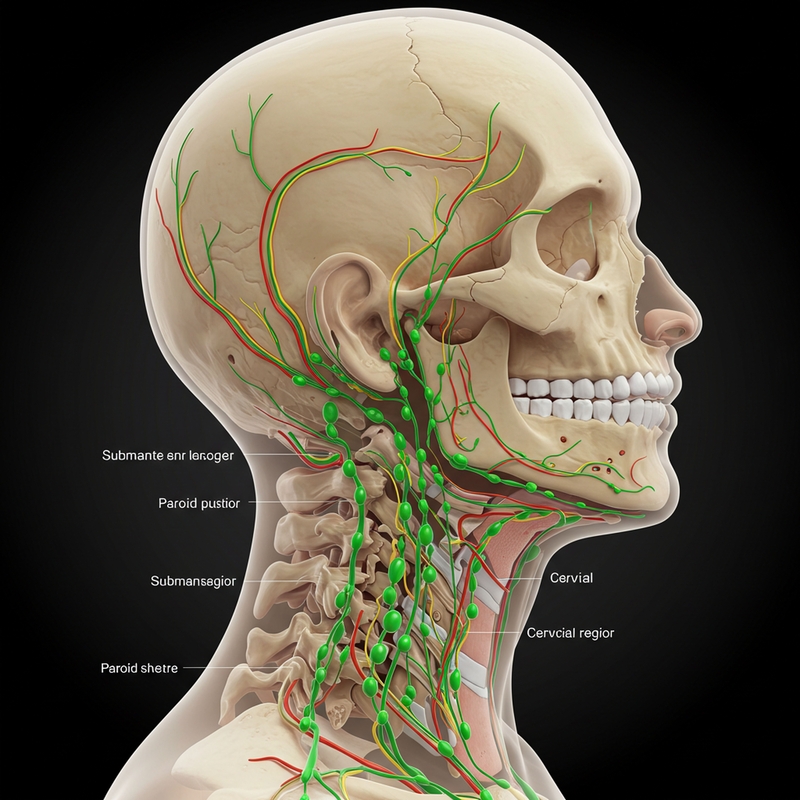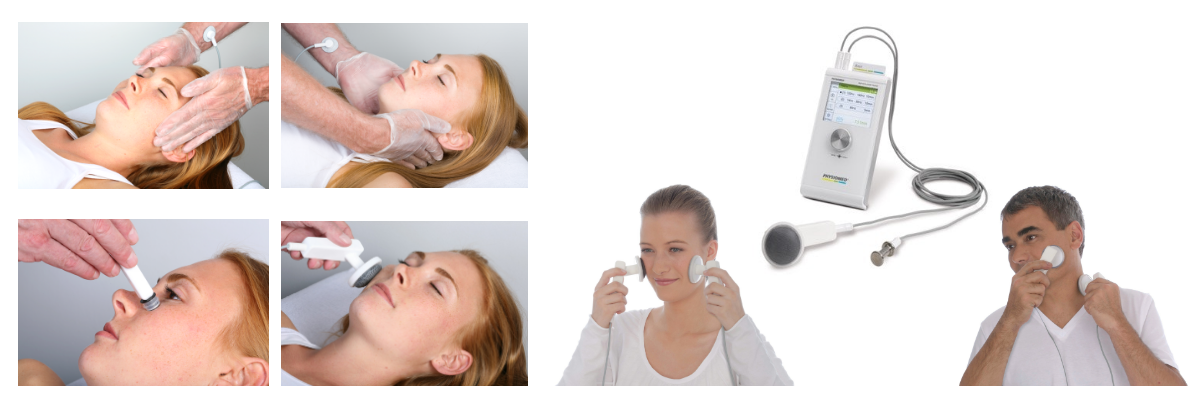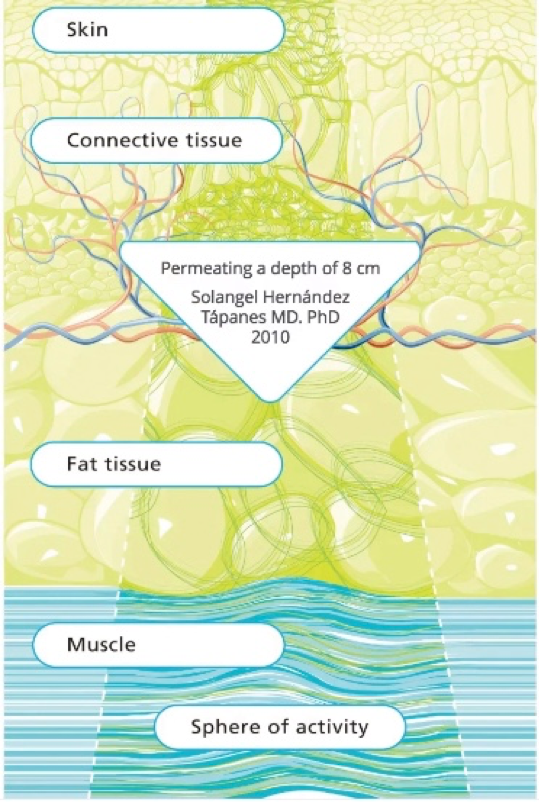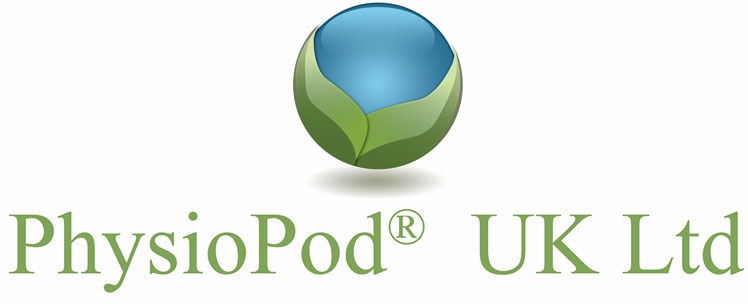Deep Oscillation Enhancing NHS Patient Outcomes in Head and Neck Lymphoedema Care - By Catherine Groom, Specialist Lymphoedema Practitioner
"Working in a busy NHS clinic for the last fifteen years, I have extensive experience in treating head and neck cancer patients who have developed secondary lymphoedema post-surgery and/or radiotherapy. This condition often presents with significant challenges, including excess swelling, fibrosis, pain, heaviness and tightness in the tissues, taut scars, and disruption in movement. Patients frequently experience difficulty swallowing and speaking due to swelling of the tongue and inside of the mouth, along with facial distortion. Beyond the physical symptoms, head and neck lymphoedema can have a tremendous psychological impact on a patient's well-being.

Catherine Groom, Specialist Lymphoedema Practitioner
The lymphatic system works closely alongside the vascular system to remove excess fluid from tissues. It is also vital for the body's immune response, as excess fluid passes through lymph nodes where it is cleansed and concentrated and harmful virus’s and bacteria and other foreign substances are destroyed, before it passes back into the circulatory system.

Head and neck cancer patients with lymphoedema can be more at risk of developing cellulitis in the affected area. Accumulation of fluid can become a breeding ground for bacteria, increasing the risk of cellulitis. If cellulitis occurs, prompt treatment with antibiotics is required. By undergoing a course of MLD with DOT, the reduction of fluid containing excess protein and cellular debris can also reduce the risk of cellulitis.
Manual Lymphatic Drainage (MLD)
MLD is a gentle, specialised massage designed to increase fluid uptake in affected areas, but its standalone efficacy for head and neck lymphoedema has limitations. According to the British Lymphology Society (BLS) Position Document (2024) [1], there is a limited quantity and quality of evidence supporting MLD in this field. Furthermore, the transient nature of MLD’s effects often requires robust compression for sustained benefit, which can be uncomfortable and unsightly for head and neck patients, leading to low compliance.
MLD with Deep Oscillation
In our NHS lymphoedema clinic, we offer MLD to patients with midline oedema, including those with head and neck cancer. To significantly enhance this hands-on technique, we use Deep Oscillation in conjunction with MLD. Deep Oscillation acts as a powerful adjunct that can transform the overall lymphoedema management plan.
Initial Intensive Phase
Alongside daily skincare, head and neck exercises and if relevant, compression, MLD with DOT is offered to patients in need of more intensive treatment.
Initially 6 treatments over a 2 week period are administered.
Evaluation of outcomes will determine whether further treatments are offered, until optimum results are achieved.
How Deep Oscillation is Applied

Deep Oscillation Therapy (DOT) applied through gloved hands or applicator which enable patient self management in ongoing care at home
DEEP OSCILLATION® is applied either via the gloved hands of therapists or via varying-sized special applicators. The wearing of vinyl gloves allows the therapist to feel the subtle changes under the skin. This direct contact enables the therapist to adapt the frequency and intensity of the oscillations over the affected area, to ensure the best possible outcomes for each patient.

Deep Oscillation has effects in the entire tissue layers, to a depth of 8 cm (skin, subcutaneous fat, blood and lymph vessels, muscles and connective tissue. [2]
For the treatment to function, both the patient and therapist are connected to the device. The Deep Oscillation technology has remarkable effects, permeating all tissue layers to a depth of 8 cm, including the skin, subcutaneous fat, blood and lymph vessels, muscles, and connective tissue. The applicators are 1.5 cm for post-surgery scars, 5 cm for smaller areas, and 9.5 cm for larger areas. These applicators are also designed to allow for patient self-management, which is key for ongoing care at home.
The Science Behind DEEP OSCILLATION®
Internationally patented, Deep Oscillation Therapy® is a recognised low-frequency, low-intensity electrotherapy and adjuvant vibrational technology [3]. It works by applying an intermittent electrostatic field to the target area. This field, characterised by its low intensity (100–400 volts; 150 μA) and extremely low frequency (5–200 Hz) with a rectangular, biphase waveform, creates a unique effect. The core mechanism involves the electrostatic attraction and subsequent release of the patient’s tissues at the chosen frequency, which generates deep and lasting resonance vibration. This field effectively mobilises fluids and proteins in tissues.
Benefits and Outcomes for Patients
Deep Oscillation significantly enhances the hands-on MLD therapy, helping to improve treatment outcomes. Therapeutically, Deep Oscillation Therapy is employed to stimulate the absorption of oedema, reduce pain, and assist in wound healing. These clinical benefits are attributed to its anti-inflammatory and anti-fibrous effects, which contribute to tissue relaxation, moderate vasoconstriction, local oedema reabsorption, and a reduction in fibrosis. The gentle oscillation effectively mobilises fluids and proteins in tissues, which is crucial as it reduces the amount of cellular debris and proteins built up in the fluid, thereby reducing the risk of cellulitis.
Patient Experience and Self-Management
Patient feedback is consistently positive. They often describe the gentle vibration as "very pleasant and relaxing." The noticeable reduction in swelling and fibrosis, as well as the improved mobilisation of scars, often leads patients to purchase a handheld machine for self-treatment, enabling them to reduce their symptoms further.
The Glasgow Benefit Inventory questionnaire [4] has also acknowledged the role of MLD and Deep Oscillation in treating head and neck lymphoedema, noting its effectiveness in promoting tissue relaxation, vasoconstriction, and oedema reabsorption and reducing fibrosis, making it "particularly useful in areas harder to massage, such as the head and neck."
The Broader Impact on NHS Care
Integrating Deep Oscillation in our busy NHS lymphoedema clinic has dramatically enhanced the treatment outcomes for head and neck cancer patients suffering from lymphoedema. The improved effect achieved through the therapist's hands reduces treatment times, which in turn allows for the treatment of more patients and a reduction in waiting lists.
Conclusion: The Future of Head and Neck Lymphoedema Treatment
Deep Oscillation acts as a powerful adjunct that can transform the effectiveness of the overall lymphoedema management plan. By effectively mobilising fluids and proteins in tissues, it significantly reduces the build-up of cellular debris and proteins, which is crucial, because this directly reduces the risk of cellulitis and the formation of fibrosis in affected areas.
This comprehensive approach not only manages swelling and discomfort but also proactively addresses cellulitis, one of the most serious complications of lymphoedema.
References
- BLS (2024) British Lymphology Society (BLS), Manual Lymphatic Drainage, Position Document. Found at: www.thebls.com/documents-library
- Hernández Tápanes S. et al (2009): Value of deep oscillation therapy in the healing of AB burns, Cuban Journal of Physical Medicine &Rehabilitation RNPS 2244- FOLIO 148- ISSN 2078-7162 Rev Cub MFR v.2 n.1 City of La Havana Jan-June 2010.
- Bergmann A, Baiocchi JMT, de Andrade MFC. Conservative treatment of lymphedema: the state of the art. J Vasc Bras. 2021 Oct 11;20:e20200091. doi: 10.1590/1677-5449.200091. PMID: 34777487; PMCID: PMC8565523.
- Halliday, E., Gittins, J. & Ahsan, S.F. Using the Glasgow Benefit Inventory questionnaire to quantify the health benefits of lymphoedema treatment in patients with head and neck cancer. Appl Cancer Res 40, 9 (2020). https://doi.org/10.1186/s41241-020-00093-y

